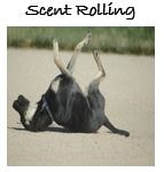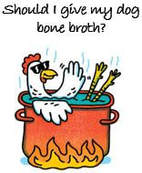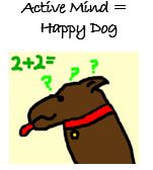Your Dog Can Talk To You
This article is brought to you courtesy of Con Slobodchikoff
www.conslobodchikoff.com - Well worth spending some time browsing through this great site – thank you Con for sharing!
Con has a B. S. and a Ph. D. degree from the University of California, Berkeley.

We have known for some time that animals such as chimpanzees, bonobos, and gorillas can be taught to communicate through using signs such as those of American Sign Language or using lexigrams on computer keyboards. We also are becoming increasingly aware that dogs have the cognitive ability to understand human gestures such as pointing, and that dogs are keen observers of the body movements of humans. However, with dogs, this communication has often been a one-way street: We point, they respond, but we do not usually respond to their gestures. In her book, offers a step-by-step method of teaching both humans and dogs a way of communicating with one another through gestures (Senechal, Sean, 2009, Dogs Can Sign, Too: A Breakthrough Method for Teaching Your Dog to Communicate to You, Celestial Arts, Berkeley CA).
I first learned of Sean Senechal’s work from a story by Anne Fawcett in the May 27, 2011 Sydney Morning Herald, which talked about the progress we are making in communicating with animals. The story talked about my work with decoding prairie dog language, and also talked about the work that Sean Senechal was doing in devising a language that dogs can use to communicate with their people.
I was intrigued, and visited Sean at her California ranch to see her work for myself. She showed me how her horse could use the sign language to request different kinds of foods, and also how her dogs could use the language to indicate what kind of food they wanted, where things hurt on their body, and their wanting to go outside to play. I ordered her book from Amazon, and found the book to be both informative and fun to read.
There are ten chapters in this paperback book. The first chapter offers a brief statement of why dogs are a good candidate for learning a sign language that they can use to communicate with their humans. Consider, for example, all of the signs, gestures, and procedures that guide dogs have to learn in order to perform their duties for people who cannot see or cannot hear.
The second chapter presents an overview of the K9Sign Language that Senechal has devised for communication, using gestures and body postures that are easy and natural for dogs. This language is rule-based with standardized moves: If a dog want to communicate “Potty,” the dog moves its hind legs out to a wide stance, while if a dog wants to communicate its desire for “Chicken” as a food item, the dog lifts its left paw up high and then lowers it down. The third chapter discusses how dog learn and some of the elements of learning theory, as an introduction to those who are not familiar with the basics, and as a reminder for those who know how other animals learn. Chapters 4 through 6 give some practical tips on what people should expect when they start to teach this language to their dogs, and how people can avoid the pitfalls and frustrations that are likely to befall them along the way. Chapter 7 gives specific information on how to teach human signs to dogs, and Chapters 8 and 9 talk about how to use and interpret the signs that dogs naturally have through their body language. Chapter 10 briefly sets out Senechal’s vision that eventually such signs can be used to communicate not only with dogs but with other animals as well, such as horses, as a way of strengthening the human-animal bond.
Throughout the book, Senechal provides photographs of the hand, arm, and face gestures that she uses with her dog Chal, and also provides extensive photographic documentation of the signs that Chal uses to communicate with Senechal. This makes it easy for a person learning K9Sign Language to learn the signs and also to learn what kinds of responses should be taught to a dog. Senechal also goes into extensive detail about the different signs, so that in addition to the visual aspect of the photographs, there is ample explanation of how to learn and teach this language.
In our attempts to communicate with other animals, Senechal’s book is a step in a good direction. Although there is increasing evidence that many animal species have sophisticated methods of communicating and language, decoding those communication methods is difficult and time-consuming. On the other hand, teaching animals a basic language that they can use to communicate with humans offers a path to increasing the well-being of both the animals and the people who otherwise have to guess what it might be that their animals want. This book is a “Must Read” for those who seriously want to communicate with their dogs.
. the You Tube below we found one of Senechal teaching a dog how to sign for water (right). We then came across the You Tube on the left - don't know if taught in same manner - amazing!
|
|
|
|
Have you ever wondered, after a long walk at the beach, why your otherwise perfect dog likes to roll in dead fish or bird poo found at the park - more important however, is how to discourage the behaviour.
|
Bone Broth - often referred to as the 'wonder food', but is it really as good as it is said to be?
|
We, as dog lovers, do our best to cater to our dog’s needs.There’s one area that often gets neglected though, and that is a dog’s mental needs.
|





